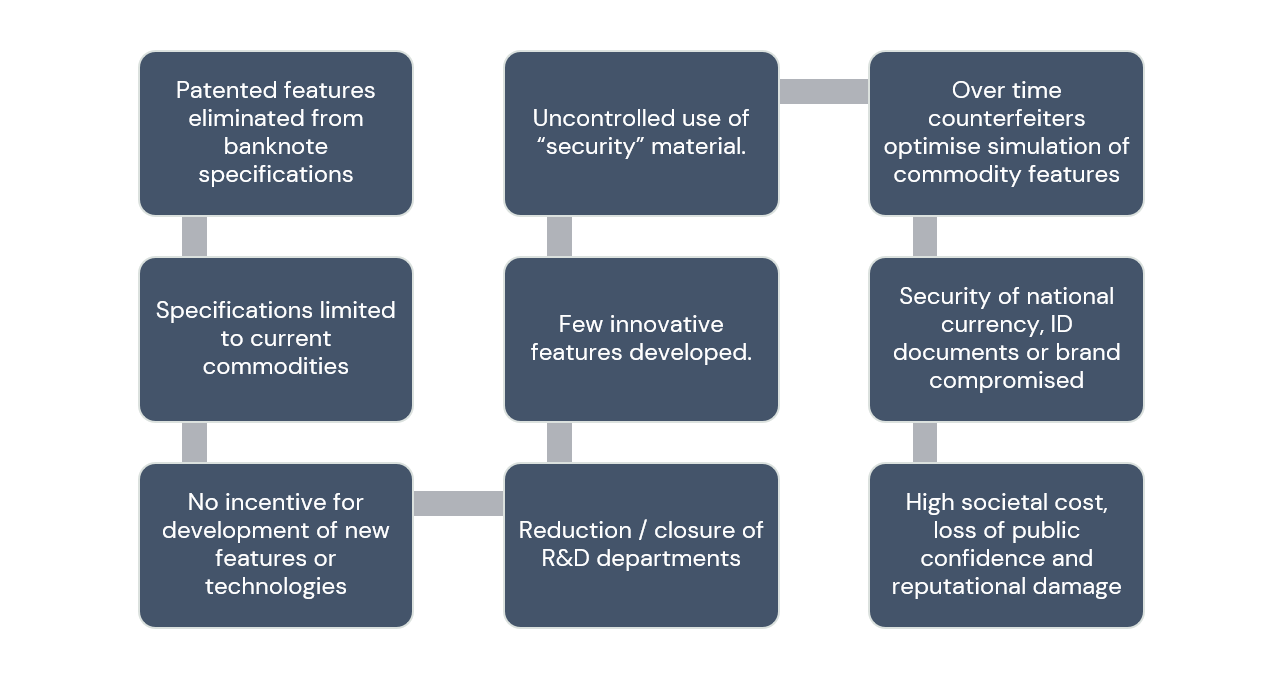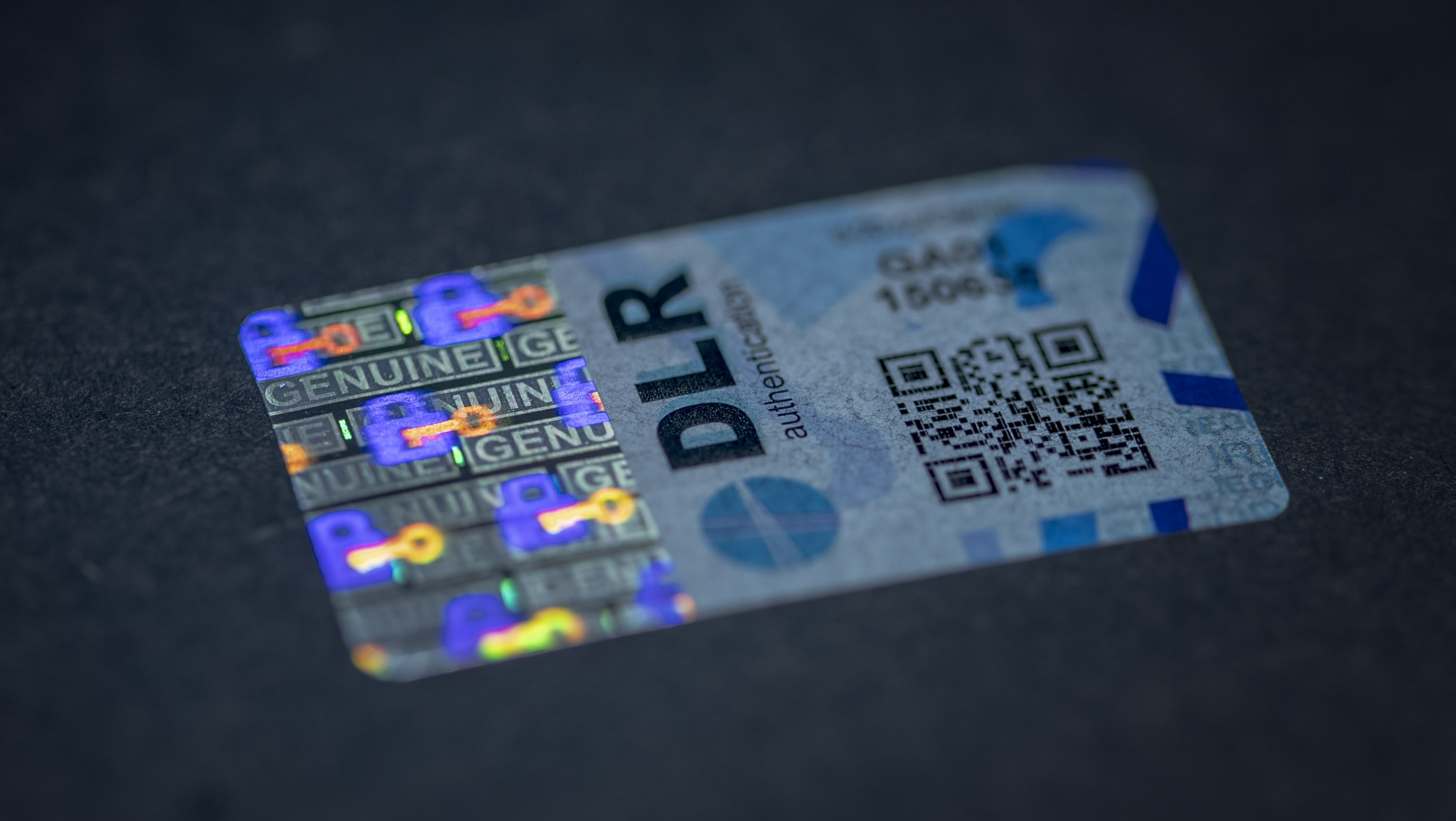The Importance of Patents in the Fight Against Counterfeiting
Chris Eastell, Head of Intellectual Property, De La Rue
Patents underpin innovation and unlock many security advantages you may not have previously considered. Read this article to find out more about the important role that patents play and the benefits they give you.
What do the following security features, developed over the last 50 years, have in common?
- PURE™
- Enhanced GEMINI™
- PureImage®
The answer is that they have all been the subject of patents.
Intellectual Property, and in particular patents, would not be in many people’s top 10 list of how best to stay ahead of the counterfeiter but they are one of the key fundamental building blocks of any innovation cycle.
What is a patent?
A patent is one type of intellectual property. Unlike the other types of intellectual property such as copyright, designs and trademarks it is focused on technical matters and protects the way something is made or works. Patents are often seen as complex documents which are difficult to understand but in simple terms, they are an agreement between an inventor and the government of a country, in which the inventor agrees to publish his or her invention, and in return, the government agrees to give the inventor exclusivity on the use of the invention for a limited time. To get granted this exclusivity the technical idea behind the patent must be new and must not have been disclosed to the public anywhere in the world. The idea must also be inventive and not just a simple modification of a known idea.
Why Do Companies File Patents?
Through the granting of a limited monopoly period the patent system rewards companies who invest in R&D and strive to create new products and processes. Once a company has a patent protecting its technology it has control over how that technology is exploited in the market. The granted monopoly allows companies to stop competitors from making/selling/using their protected technology. Alternatively, the company can grant licenses to allow its competitors to use the technology in exchange for a license fee. Ultimately patents are valuable commercial assets which protect a company’s investment in innovation and increase its competitive advantage.
What is the benefit to you?
Put simply patents underpin innovation and this is particularly the case in the Banknote and Secure Document Authentication Industry. Central banks, and other end users of secure documents, quite rightly want continuous improvement in new and improved security features to ensure public confidence. This is achieved when companies have the confidence to invest in R&D and patents provide the foundation for this confidence. From the customer’s point of view, patents enable maximisation (not constriction) of exploitation of innovation and open up opportunities through licensing and know-how transfer and importantly place know-how in the public domain for general use after the patents expire.
Patents provide mechanisms where state-of-the-art technology can be made available to smaller issuing authorities who cannot justify setting up their own R&D department.
“The enforcement of patents controls inappropriate usage, e.g. use of technology outside the secure document industry which would be a potentially legitimate source of material for counterfeits.”
The flow chart illustrates the potential consequence of features with patent protection being eliminated from a banknote specification. On first appraisal, this may appear to be a positive step as patents are often seen as being barriers to competition. However, as can be seen from the graphic below the likely outcome is a significant reduction in research on security features and the widespread use of low-value commodity features. Ultimately counterfeits will increase, and the security of the national currency will be compromised.

De La Rue Patented Features
De La Rue is focused on developing new security features for all its customer and this commitment to innovation is recognized through its extensive patent portfolio. One of the key technology areas that dominate De La Rue’s patent portfolio Holography.
In the field of Holography De La Rue focuses on direct write lithography (an advanced type of digital “hologram” enabling precise control of the grating structure) and a highly evolved form of Benton (H1-H2) holography (“classical” holography). De La Rue has been filing patent applications in the field of “classical” holography since the 1980s and this has continued more recently with the invention of security features combining both “classical” and direct write origination methods. Direct write “holography,” through precise control of grating structure, creates strong, interactive and engaging kinetic effects as well as complex image switches and De La Rue has applied for multiple patent applications in this area. This includes patents that protect the fundamental characteristics of the digital pixels and those more focused on the striking public effects such as Spotlight™ and PureImage™. De La Rue’s patent applications protecting their direct-write holographic technology will ensure the protection of this key technology area for all stakeholders until the late 2030s.

It is important to note that patents protect the technology that underpins a physical product, and it is very common that there are multiple patents protecting one security feature.
In summary De La Rue’s strong track record in innovation across many secure document applications is underpinned by a strong patent portfolio. This provides protection for all De La Rue stakeholders over the next two decades and allows De La Rue to invest in confidence in its future R&D projects creating new and striking security features for all its customers.
For more information e-mail authentication@delarue.com.



